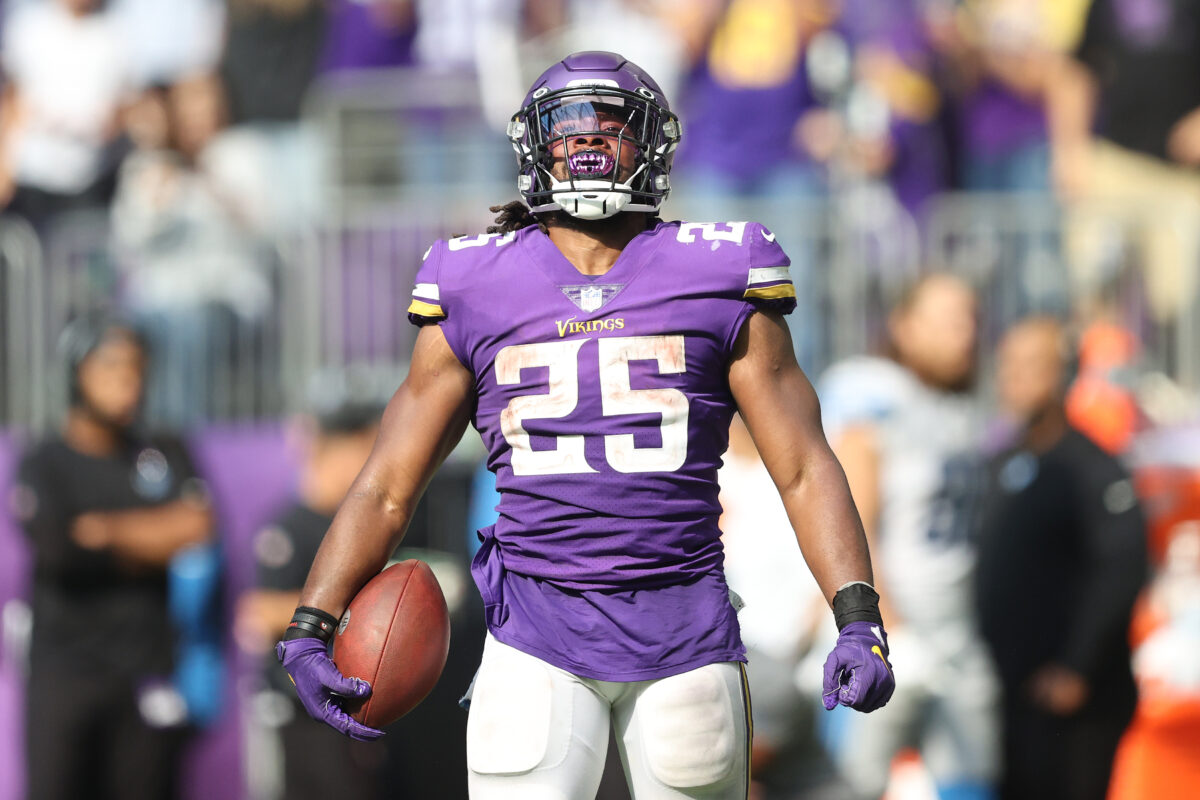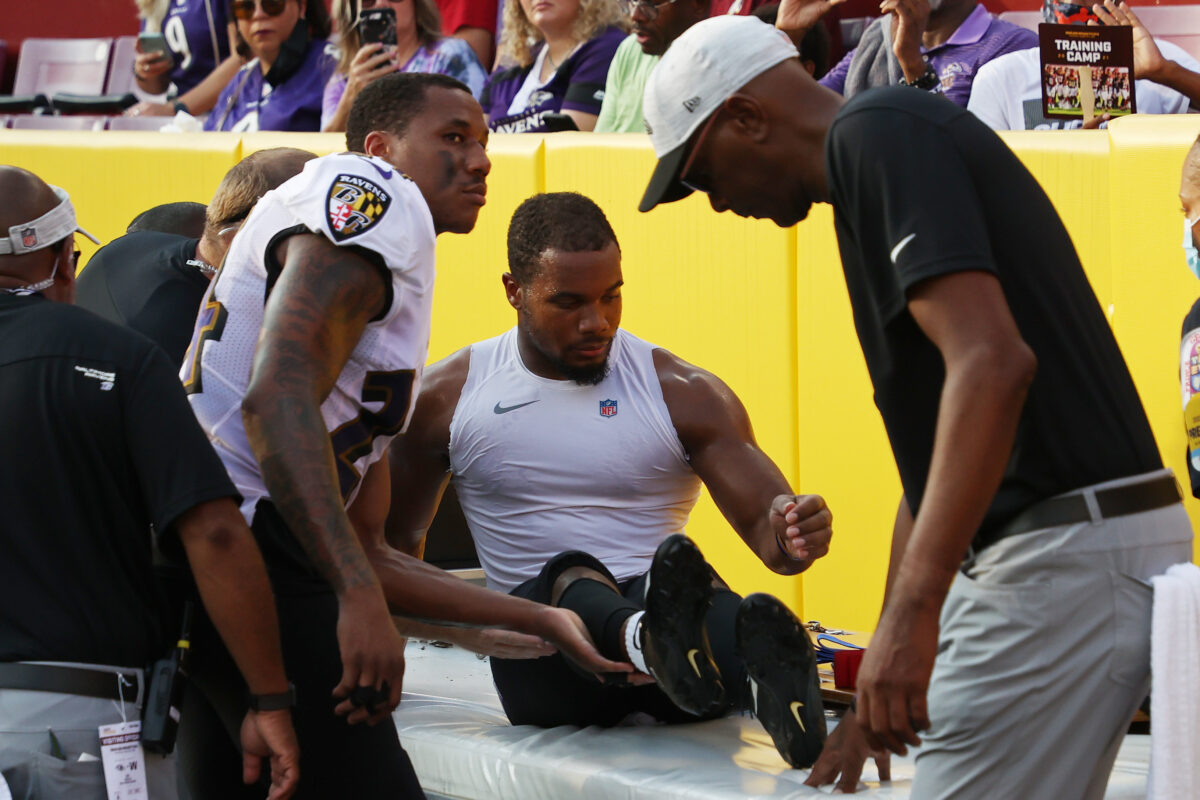Checking in on the fantasy football options whose value is rising and falling.
One of the things I believe that has made me consistently successful in fantasy football leagues is that I find a way to avoid teams altogether. This year as I prepared for the one fantasy football draft and one fantasy football auction that mean most to me, my list of teams I wanted nothing to do with under any circumstance was limited to the New York Jets, Washington Football Team and Jacksonville Jaguars. I entered the fray knowing there was no way I was going to end up with anyone on any of those teams. I would take Mecole Hardman before I took Terry McLaurin, D.J. Chark or Jamison Crowder…
That’s me.
Now I’m wondering if I want anyone from the NFC East – and that includes Dallas Cowboys RB Zeke Elliott. Saquon and Dak are gone. The Eagles can’t keep anyone but Carson Wentz healthy (who would have figured that?). As least Dak could post giant fantasy football numbers because his defense stunk. Saquon was the only Giant I wanted and I still want nobody from WFT — which is more in line with WTF.
Through six weeks of the season, the teams of the NFC East are a dumpster fire. They have a combined record of 5-18-1. If you take the games in which they didn’t play each other and one team likely had to win, their record is 2-15-1 outside the division.
This is bad on a scale rarely seen.
The good news? There is none.
The bad news? If things hold up in the NFL and the fantasy football playoffs are held in Weeks 14-16, of the 12 games those four teams will play, only one of them will be against a division opponent (when Dallas is scheduled to play Philly in Week 16). At least if they were playing each other, you could get excited about the inept possibilities.
In the leagues that matter to me, I am fortunately underrepresented by teams from the NFC East. More of you should join me.
Here is the Week 7 Fantasy Market Report:
Fantasy Football Risers
Ronald Jones, RB, Tampa Bay Buccaneers
For most of his short career, Jones has been a player with a lot of talent who never put it all together. In his first two seasons, he never rushed for more than 80 yards in a game. In his last three, he has topped 100 yards in each rushing 60 times for 330 yards and two touchdowns. It’s taken him two-and-half years to live up to being a big deal in Tampa, but he’s finally done it.
Deshaun Watson, QB, Houston Texans
His stock took a dive (so did his team) to start the year, but people forget he played the Chiefs, Ravens and Steelers in those game – and two were on the road. Once he got past that hurdle, over the last three games, he has topped 300 yards in each – throwing for 994 yards and nine touchdowns. Those are the kind of numbers he was drafted for and the reason he is almost unbenchable.
Mike Davis, RB, Carolina Panthers
When Christian McCaffrey went down, seeing as he was the No. 1 overall pick in most leagues, it was a death blow. But, those who handcuffed McCaffrey with Davis have been keeping their heads above water. In the four games McCaffrey has been out, Davis has two games with 84 or more rushing yards and has scored a touchdown in each game. His role may greatly diminish when McCaffrey returns, but he has been a solid RB2 in any format.
Adam Thielen, WR, Minnesota Vikings
Thielen was drafted to be a borderline WR1 – a guy barely in or barely out of the top 10 on draft day. But, while Justin Jefferson has been stealing the headlines of late, Thielen has seven touchdowns in six games and only has one game in which he didn’t score. He is a machine and the guy Kirk Cousins looks to when he needs a big catch. Minnesota may stink and his quarterback is a bum, but Thielen just keeps on rolling.
Darrell Henderson, RB, Los Angeles Rams
Henderson has become one of the more interesting backs this season as the guy grabbing the job to replace Todd Gurley. In the opener, he had just three carries for six yards. But, in the five games since, he has rushed for 80 or more yards three times and has scored four touchdowns. His disparity just keeps growing, even with Malcolm Brown and rookie Cam Akers available.
Fantasy Football Fallers
Lamar Jackson, QB, Baltimore Ravens
What made Jackson the MVP last year was that he was an incredible rushing threat, but also had three or more TD passes in seven of 15 games. This season, the only game he had three passing TDs was Week 1. He’s still someone I wish I had in every league. He’ll never be benched, but he hasn’t been light’s out, which is what everyone who took him as the first or second fantasy QB expected. I never want to go up against him, but he has yet to have that one-man gang game that blows an opponent out of the water.
Jarvis Landry, WR, Cleveland Browns
The knock on Landry is that his value is much higher in PPR leagues because he has never been known as a touchdown threat. But, he’s been a bust in any format. He doesn’t have more than five receptions in any game, has just two games with more than 50 receiving yards (61 and 88) and his next touchdown will be his first touchdown. He’s pushed himself out of lineups and firmly in trade talks to move him as a name, not for his production.
Devin Singletary, RB, Buffalo Bills
He had the chance to be the go-to guy in the run game, especially when injuries made him about the only option. But, through six games, he has just one touchdown, brings little as a receiver in the Bills offense and, over the last three games, has rushed 39 times for just 113 yards. He is becoming a harder sell all the time to justify starting every week.
Zach Ertz, TE, Philadelphia Eagles
This a real head-scratcher. He’s expected to miss three or so weeks, but that is actually a good thing for Ertz owners. At a time when some tight ends can dominate weeks, Ertz was considered one of them, but hasn’t been that. Not even close. In six games, he has more than 42 yards receiving just once, less than 20 in half of them and has just one catch of more than 12 yards. At least he doesn’t hurt an owner now because his bad games don’t count against them.
Julian Edelman, WR, New England Patriots
You weren’t expecting a ton of touchdowns from Edelman, but you were expecting receptions and yards. In five games, he has just 20 catches for 302 yards – with eight receptions and 179 yards coming in one game. He proved against Seattle in Week 2 that he still has dominance in him, but, over the last three games, he has caught just seven passes for 66 yards. He’s borderline dump-worthy for those with deep rosters.





